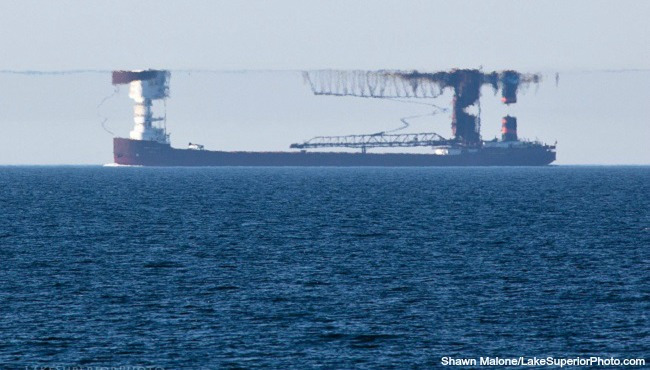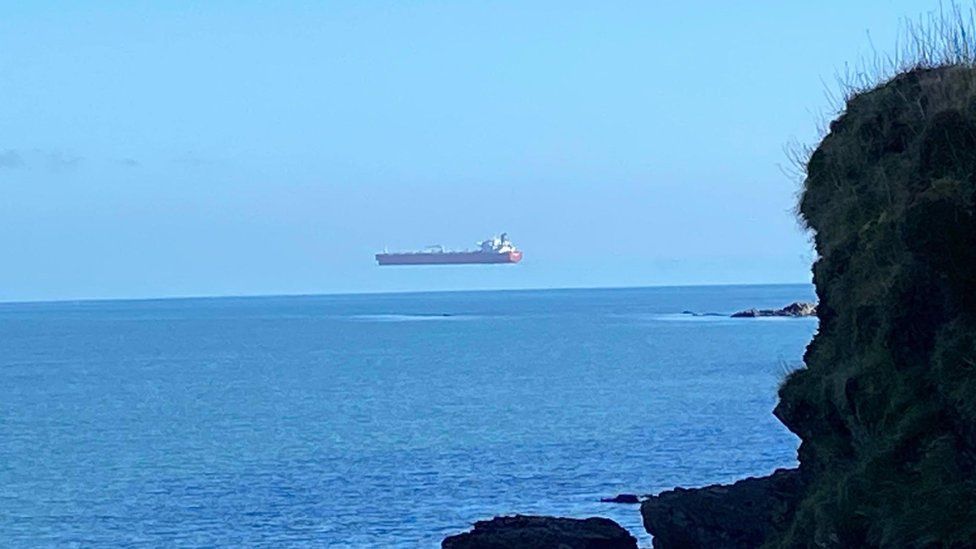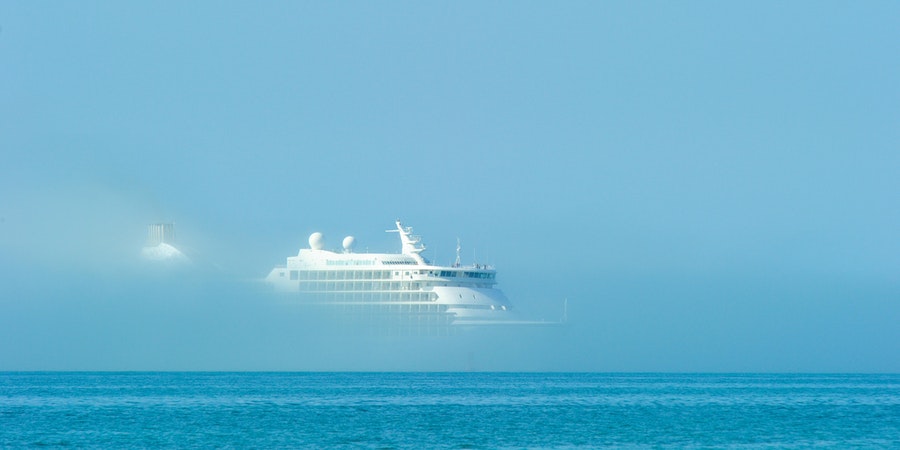Tabloid media love to invoke the cool sounding "fata morgana" or "superior mirage" to explain images of things floating in the sky. The problem is that a real fata morgana superior mirage (above the boat) looks like this:

An inferior mirage (under the boat) looks like this:
In both cases there's distortion, and there's inversion.
It does NOT look like this:
Source: Science Channel
Despite the Science Channel's talking heads saying this is a Fata Morgana, it very obviously is not. The giveaway is the total lack of distortion, duplicated images, or inversion. It's just a boat, relatively close to shore, but beyond a false horizon created by the fog bank behind and around the boat, combined with the shallow angle at that distance, altering the reflection off the surface of the sea. If you boost the levels in the image, as I did with the title image of this post, then you can see where the horizon would be.
The person who shot the video says:
There's several examples of this type of illusion being "explained" as a fata morgana.That is what really happened that day, the "Fata Morgana ". That was a very cold and calm morning, no breeze. The steam created from the warm waters of the Golf Coast of Florida create a thin layer of fog over the ocean, creating the illusion of the sailboat floating on the air. If you look closely you could see the water line over the boat surface. The apple was a prop that we used that day for a TV commercial.
http://www.express.co.uk/news/weird...flying-boat-could-have-emerged-through-portal
But again, a little adjustment of the levels shows it's just a change in the surface of the water that's creating a false horizon. You can even see the brighter parts of the boat (where the bridge faces the sun) creating ordinary reflections on the water surface below.Video footage posted to YouTube allegedly shows the phenomenon as seen from Cocoa Beach, Florida, USA.
It was reportedly filmed by a tourist but witnessed by many more people on the beach.
While there have been claims it was a real flying boat, or even an odd-shaped UFO exiting the sea, the truth, as often is, remains likely to be more down to Earth.
Level-headed sceptics said it was not a flying ship but another example of an unusual optical illusion, known as “Fata Morgana.”
This photo is higher resolution than the video of the sailboat, and so we can see the difference between the water surface and the sky. We can even see the ripple of the wake from the small boat that's "in" the illusionary sky area.
Another:
Source: thriol on Flickr
Fata Morgana sounds cool, and it does make some really cool images sometimes. But it's not a panacea explanation for everything that looks like it's floating in the sky.
See also: Floating Cities are Generally not Fata Morgana Mirages
Last edited:



